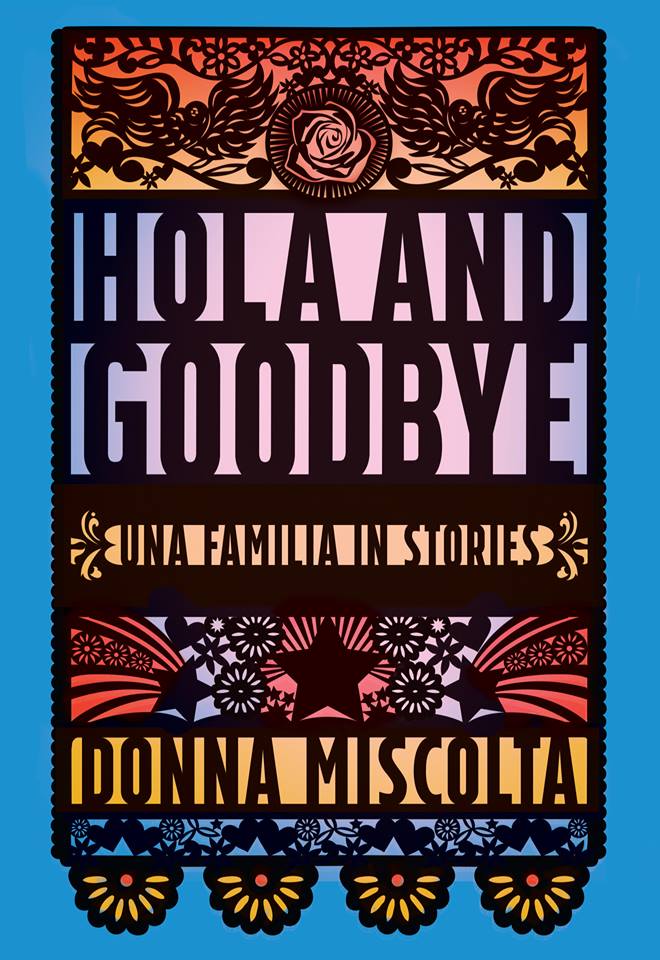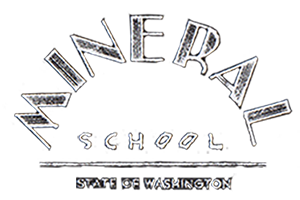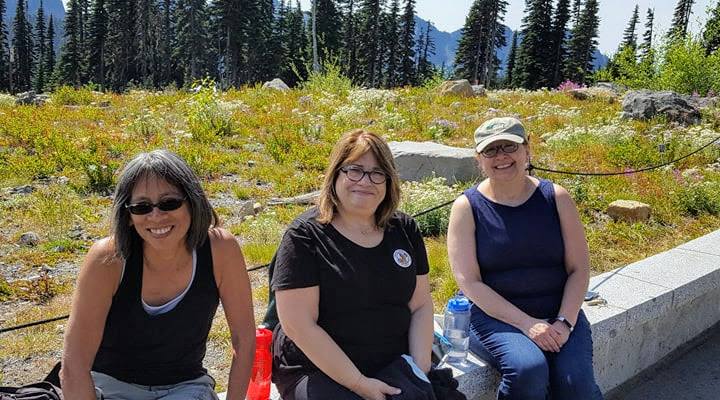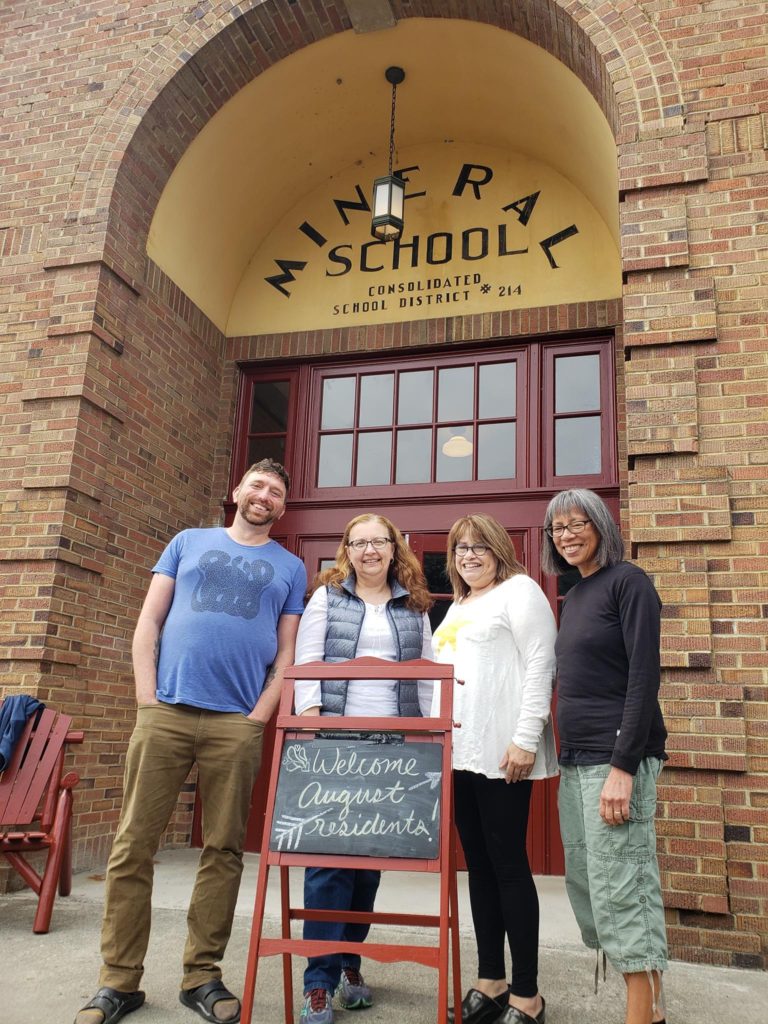Blog
Meet a Resident: Donna Miscolta
Seattle fiction writer Donna Miscolta (Mineral School ’18)  is the author of When the De La Cruz Family Danced (Signal 8 Press) and Hola and Goodbye (Carolina Wren Press). The recipient of support from 4Culture and Artist Trust, with stories published in many journals, she recently learned her new fiction project, working-titled Angie Rubio Stories, will publish in fall 2020 by Jaded Ibis Press, a feminist press focused on work by women of color. Mineral super-volunteer and fiction author Kait Heacock conducted this interview.
is the author of When the De La Cruz Family Danced (Signal 8 Press) and Hola and Goodbye (Carolina Wren Press). The recipient of support from 4Culture and Artist Trust, with stories published in many journals, she recently learned her new fiction project, working-titled Angie Rubio Stories, will publish in fall 2020 by Jaded Ibis Press, a feminist press focused on work by women of color. Mineral super-volunteer and fiction author Kait Heacock conducted this interview.
Your new project is Angie Rubio Stories, stories focused on a teenage character inspired at times by your own childhood and feelings of being an outsider. What do you hope people will take from reading about her?
The stories cover Angie’s life from kindergarten through high school. Angie’s existence is relatively calm and trauma-free. That is, her experience of racism comes sometimes in overt remarks or actions, but mostly in subtle jabs and covert micro-aggressions such that she sometimes wonders if she is the one at fault for being in the world as a brown person. She’s lucky not to live in a place or among people where attacks are violent and physical toward her and her family. Yet, words do harm and Angie’s struggle to find herself and her place in her family, among peers, and in society is often stymied by the everyday affronts, snubs, and slurs that she receives, observes, sees on television, and reads about in media. This is what I want readers to experience.
What craft elements do you bring with you in switching from writing a longer work to a short story? What do you leave behind?
 Whether novel or short story, I tend to focus first on character and situation. From there the narrative unfolds, though plot is a challenge for me much more so when writing a novel as opposed to a short story. Maybe that’s why I rely a lot on language. I like to invite the reader in through language, so that’s an emphasis for me in both forms. Setting can be given more time and attention in a novel than a story, though it’s necessary for me to at least see it in my mind when writing in either form. First person point of view is something I’ve done in a story, but not a novel. In fact, it took years before it felt right for me to come to a story using “I.” I think so much depends on the story you’re telling and which elements it demands for its most effective illumination.
Whether novel or short story, I tend to focus first on character and situation. From there the narrative unfolds, though plot is a challenge for me much more so when writing a novel as opposed to a short story. Maybe that’s why I rely a lot on language. I like to invite the reader in through language, so that’s an emphasis for me in both forms. Setting can be given more time and attention in a novel than a story, though it’s necessary for me to at least see it in my mind when writing in either form. First person point of view is something I’ve done in a story, but not a novel. In fact, it took years before it felt right for me to come to a story using “I.” I think so much depends on the story you’re telling and which elements it demands for its most effective illumination.
You’ve written two collections of short stories, the Angie Rubio Stories and Hola and Goodbye (Carolina Wren Press, 2016). Who are your personal masters of the short story?
I’d like to mention some of my favorite short story collections: Mia Alvar’s stories in In the Country are long, deep, and graceful. Each story, in addition to transporting the reader to the Philippines, Bahrain, New York City, or Boston, is a lesson in point of view, space, and time. Luis Urrea’s The Water Museum takes me places and among characters I have known or want to know. Their burdens and hopes are mine because I am so immersed in their stories in whatever shape they are told. Carmen Maria Machado’s Her Body and Other Parties has innovative storytelling, beautiful use of language, and deep, layered looks at women’s lives. Caitlin Horrocks’s This is Not Your City is seamless and almost magical in creating mood through a subtle choreography of place, situation, and character. And in People Like Us, I like Margaret Malone’s economy and her humor, and her characters who are vulnerable with confusion but resilient in their efforts to navigate the confusion.
Did you work on the current collection during your stay at Mineral School? Could you describe your time at Mineral School and what it meant for you to be in community with other artists?
I split my two weeks at Mineral School working on two different book-length manuscripts. One was the novel I continue to work on, which is based on one of the stories in my first collection Hola and Goodbye. The other was my Angie Rubio story collection. I went story by story, making revisions, polishing, and trying to see them objectively. Were they appealing and engaging as I hoped they would be, or was it all just wishful thinking on my part? It turns out the work I did on them paid off. The collection will be published by Jaded Ibis Press in fall 2020.
While at Mineral School, I had a routine. I did a 45-minute bike ride each morning on the quiet, nearly empty roads of Mineral, then went to my desk to review the previous day’s work and consider my goals for the day before breakfast. I worked at my desk until lunch, after which I worked a couple of hours before breaking for a walk outdoors or a spin on the stationary bike that happened to be in my room. After dinner, it was either more writing or reading or watching an episode of Wild, Wild Country with the other residents. It was always great to hear what the other residents were working on and to be energized and inspired by their presence, knowing that work was being created nearby in every classroom every day.
What does it require to balance writing and parenthood?
For me it was consistency, making writing a part of my daily routine that included putting in at least eight-hours at the day job, prepping meals, driving kids to sports, band, or social activities, and helping with homework. At the end of the day, I spent a half hour to an hour writing – if only a few sentences at times. But sentences add up to paragraphs, and paragraphs add up to stories or chapters and eventually books. Knowing that is what sustained me as a writer/parent/full-time wage earner.
What are you working on these days?
I’m still working on that novel I was working on at Mineral School. I came away thinking I had solved a structural problem, and, in fact I had, but I’d been too hopeful about the robustness of the plot and character arcs. I was seriously baffled for a while on how to fix the flaws and considered a whole new approach, which would’ve meant attempting to write in a genre I admire but in which I had no experience. I soon discarded that idea, which was destined for nothing but disaster. I’m still hoping to get it all fixed and pretty by the end of the year.
I’ve also been drawn lately to writing essays and for the last two summers have taken workshops in creative non-fiction at the Port Townsend Writers’ Conference, first from Suzanne Paola and then from Rebecca Brown. Both times I came away with drafts of essays that I’d like to complete and eventually collect in a book about family and family origins. I want to look at how big-picture issues such as colonization and immigration resulted in personal loss such as my parents’ languages and their parents’ traditions, and the further impact of what has been considered American and what has been considered as not quite American.
That’s Donna on the far right below, with her residency-mates. From left to right, Gage Opdenbrouw, Linda Malnack, and Judy Bolton-Fasman.






